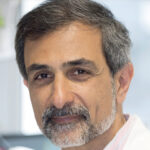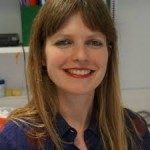Lien vers Pubmed [PMID] – 26387456
Dev. Cell 2015 Sep;34(6):694-704
The esophagus links the oral cavity to the stomach and facilitates the transfer of bolus. Using genetic tracing and mouse mutants, we demonstrate that esophagus striated muscles (ESMs) are not derived from somites but are of cranial origin. Tbx1 and Isl1 act as key regulators of ESMs, which we now identify as a third derivative of cardiopharyngeal mesoderm that contributes to second heart field derivatives and head muscles. Isl1-derived ESM progenitors colonize the mouse esophagus in an anterior-posterior direction but are absent in the developing chick esophagus, thus providing evolutionary insight into the lack of ESMs in avians. Strikingly, different from other myogenic regions, in which embryonic myogenesis establishes a scaffold for fetal fiber formation, ESMs are established directly by fetal myofibers. We propose that ESM progenitors use smooth muscle as a scaffold, thereby bypassing the embryonic program. These findings have important implications in understanding esophageal dysfunctions, including dysphagia, and congenital disorders, such as DiGeorge syndrome.


